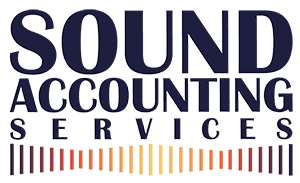Company or sole trader?
6 April 2016 will be a bad news day for manyone-man companies. The tax rate on dividends you receive on or after that date increases by 7.5%. So if dividends are your preferred way to extract profit from your business it might be time for a rethink.
The current rule of thumb
For 2015/16 and earlier years the general rule was that if your business made annual profits of around £25,000 (or more) the most tax-efficient option was for it to be run through a company rather than be unincorporated. The strategy was then to extract the profit as a small salary and the rest as dividends. It was soon realised after the Chancellor announced higher tax rates for dividends that the point at which a company was the most tax efficient option would change.
What’s the advantage?
Using the profit extraction strategy outlined above, a business run by a company with annual profits of £30,000 would, for 2016/17, be about £700 more tax efficient than an equivalent unincorporated business. At £60,000 the tax advantage is about £3,500. After that the tax advantage tails off and is effectively lost by the time profits reach £130,000 per year. Above that you’ll actually pay more tax by using a company (seeThe next step ).
Disincorporate to save tax
While mathematically it will save you tax if you disincorporate your business when profits pass £130,000, in practice it’s not necessarily the most tax-efficient option. By not taking all the profit, but instead leaving some in the company it won’t be hit by the new higher dividend taxes, in fact no taxes at all (apart from corporation tax). You can then take the money when your financial position makes it tax efficient. For example, when you wind down your business or retire completely ( yr.16, iss.7, pg.3 , see The next step ).
The variable factors
Also bear in mind that because profits hit the magic £130,000 one year it doesn’t mean they will the next. So disincorporating your business might be premature. Similarly, when profits fall below £30,000, this doesn’t mean they’ll remain at that level. There are other factors to consider before disincorporating, such as the effect your other income has on your overall tax bill. Non-tax issues such as the limited liability a company provides also play a part. Therefore think carefully before changing your business structure.
Tip 1. Review your business’ performance each year and make profit projections; obtain your accountant’s help if necessary. That way you can plan the best strategy to remain tax efficient.
Tip 2. If you decide disincorporation is the way to go, but don’t want to lose your limited liability status consider forming a limited liability partnership (LLP) with, say, your spouse or partner. They don’t have to take a share of the profit from the business, but it can be tax efficient if they do – however that’s a story for another day
Reproduced with the permission of Indicator – FL Memo Limited. For subscription information call 01233 653500;
